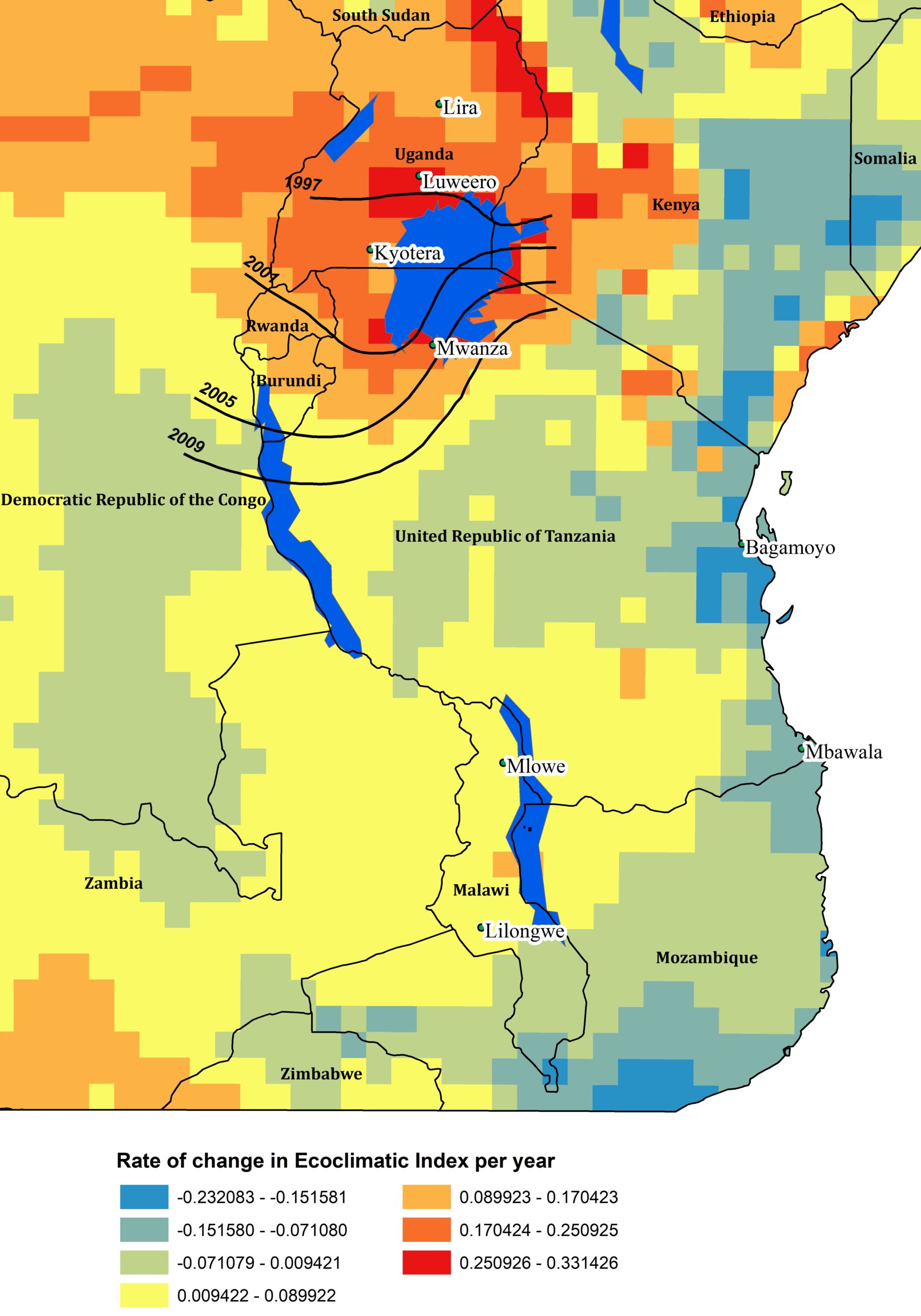IPRRG members have recently published an important and interesting paper using pest risk modelling techniques to explore the link between cassava diseases in East Africa and climate suitability for the vector, silver leaf whitefly. A CLIMEX niche model for B. tabaci was applied to an historical climate time series in East Africa. Transforming the time-series of climate suitability maps into trends through time at each location revealed the temporal trends against the background of seasonal and interannual variation. The study, published in Scientific Reports, found that the area in which the epidemic has been documented experienced a sustained increasing trend in modelled climate suitability for B. tabaci throughout the 29 years during which the pandemic emerged. Elsewhere in the region the climate suitability trend was either flat or declined over that same period. This is the first compelling published report of a statistically-significant link between observed climatic changes and the increase in abundance of an insect pest contributing to a crop disease pandemic. The success of this multi-scale study provides strong support for the robustness of our pest risk modelling techniques. [*Deceased]
The full article is accessible here. You may also be interested in the underlying CLIMEX model, which is described in an article published in the Bulletin of Entomological Research.

Figure 6A from Kriticos et al. 2020 Sci. Rep., showing change in EI for whiteflies in East Africa
